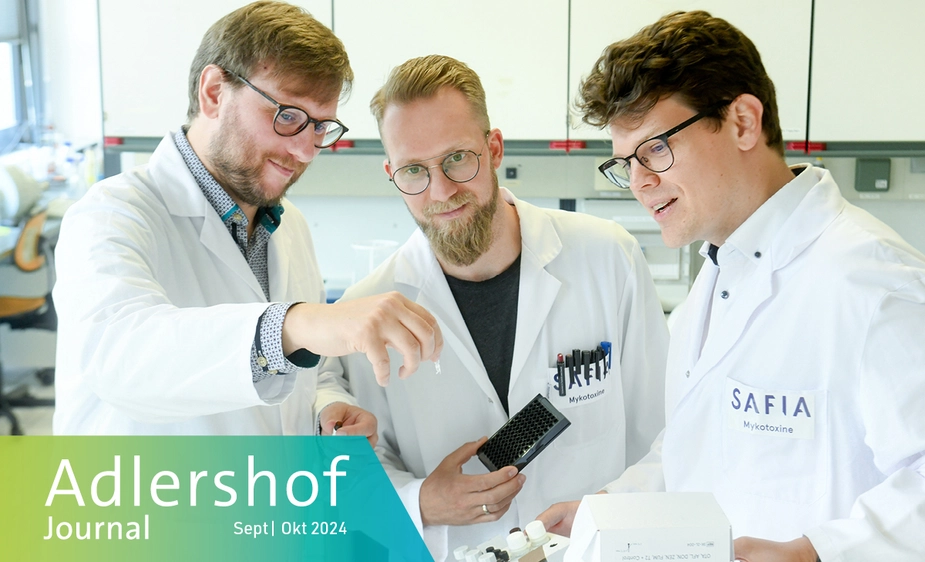Food safety: Tracking down mould
SAFIA's rapid tests ensure food safety
They lurk in the shadows, hide in your flour, permeate exotic spices, and swim undetected in sweet juices. We are talking about mycotoxins, the poisonous substances produced by various fungi or mould. They thrive in damp and warm environments and leave their poisonous residues in our food long before the grey or green fluff becomes visible.
“Mycotoxins are anything but healthy. Some are even highly poisonous,” says Timm Schwaar. “Nausea and vomiting are but some of the symptoms of mould exposure, which can end fatally. For this reason, mycotoxins are strictly regulated and must be tested.” There are now rapid tests to do so, much like the ones we became familiar with during the coronavirus pandemic. There is a problem: These rapid tests are geared towards a single toxin. To detect more than one, food producers, processors, and retailers would have to test more often. This costs time and money.
Schwaar has set out to change this. To do so, the chemist founded the start-up SAFIA Technologies together with his colleague Peter Carl. “We have developed a rapid testing kit that is able to detect a whole range of different toxins at the same time,” he says. “And we can even ascertain the amount of each toxin.” Schwaar and Carl both studied at Berlin’s Humboldt University and went on to complete their PhD at the Federal Institute for Materials Research and Testing (BAM). This is where the idea for their analysis system first sprouted. “Peter developed the procedure as part of his dissertation,” says Schwaar.
As with the lateral flow tests of the pandemic, antibodies are at the heart of the technology. The are not only produced by our body against bacteria and viruses but also against toxins. When a toxin enters our bloodstream, the corresponding antibody identifies it and binds to it. At this point, our immune system is able to recognise it. SAFIA’s testing kit is based on the same principle. When a toxin binds to its antibody and the SAFIA particle, a unique complex with distinct optical properties is formed. The two chemists leverage this property. “After the sample is dissolved in alcohol and mixed with the reagents of our test, it goes into a flow analyser,” explains Schwaar. “There, it is illuminated, and a sensor detects the reflected light. Every individual particle can be identified and assigned to a toxin based on its fluorescence.”
Most antibodies today are produced and sold by specialised companies. However, some must still be discovered. To do so, SAFIA started a project with BAM to explore new antibodies, enabling them to identify ever more toxins.
The focus on the safety of foodstuffs wasn’t something that the founders had anticipated from the beginning. “Originally, the method was aimed at analysing wastewater,” says Schwaar. “But these types of tests are not mandatory at sewage treatment plants. So, the demand would have been low.” There’s a very different picture in the food safety industry. Flour, spices, dried fruit and also juices are particularly susceptible to mould infestation. Climate change could exacerbate the problem. It creates optimal conditions for mould. Regular testing has long become routine in food processing. And so, it is an ideal playing field for the young start-up. As it turns out, it’s not the only one though.
“We have been contacted by a diagnostics company that has used our testing kit to experiment with urine sample analysis,” says Schwaar. “This is interesting because it was quite difficult to identify mycotoxins in the human body as of yet.” The experiments were so successful that the testing kit have now been added to the standard repertoire. SAFIA has now set its sights on the medtech industry.
Kai Dürfeld for Adlershof Journal
The quick and easy multiplex method for your laboratory · SAFIA
